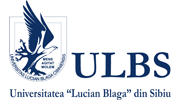Pentachlorobenzene (PeCB)
What is it? Pentachlorobenzene is an organochlorinated substance classified as persistent organic pollutant (POP) and forbidden by the Stockholm Convention since 2013.
Use (purpose):
PeCB was employed:
- In products having also contained PCB,
- For the preparation of dyes,
- As fungicide,
- As flame retardant,
- It is likely that it is still used in certain countries as intermediary chemical (e.g. in the production of pentachloronitrobenzene),
- PeCB is also a unintentional by-product having appeared during the thermal and industrial processes, including during incineration,
- It can be found as impurity in certain products such as solvents and pesticides.
Present status: inscribed in annex A and C of the Stockholm Convention without specific derogation.
In Romania: forbidden.
Health effects: the chemical is toxic if swallowed and very toxic for aquatic life, causing long term adverse effects for the entire aquatic environment.
Exposure limits, lethal dose: -.
Contamination sources:
Occupational: workers at the dangerous waste incinerators, workers from the landfills. The agricultural workers performing pesticide and fungicide applications from stocks in course of removal. People employed in the furniture industry, in dyes, paints and lacquers production, in pigments, adhesives and plastics production etc.
Food: fish and aquaculture products from contaminated water bodies.
Useful links:




